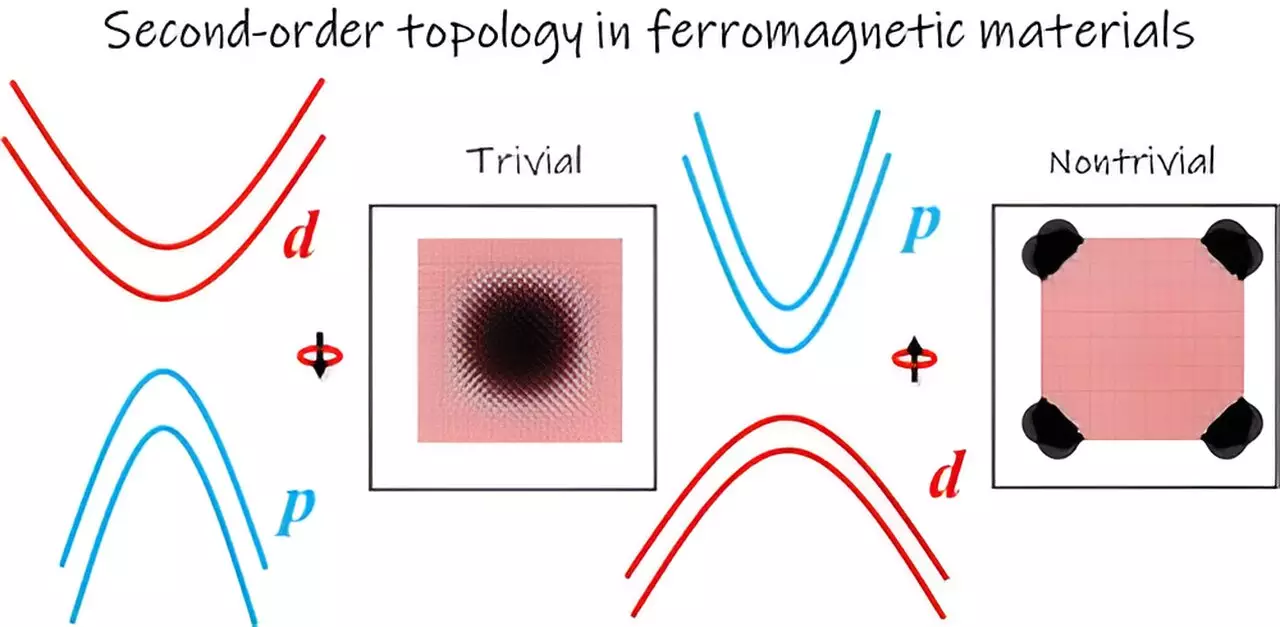The field of spintronics is rapidly advancing, with researchers aiming to exploit the spin degree of freedom in electrons as a revolutionary method for data transmission. At the forefront of this research are topological insulators, a class of materials characterized by conducting surfaces and insulating interiors. Recent work from Monash University’s research team, affiliated with the FLEET Center, highlights a significant leap towards identifying intrinsic magnetic second-order topological insulators, which hold promise for future spintronic applications.
Topological insulators exhibit properties that facilitate spin-based information processing. The underlying concept rests on their ability to conduct electricity along the material’s surface while remaining insulating in the bulk. This unique property provides a pathway for spintronic advancements, as it allows for the possibility of manipulating spin currents without significant energy loss, a critical requirement in developing efficient electronic devices.
The focus of the Monash University study revolves around two-dimensional (2D) ferromagnetic semiconductors, particularly materials like CrI3, Cr2Ge2Te6, and VI3. These compounds have garnered considerable attention due to their intrinsic magnetic properties coupled with their low dimensionality, enabling efficient spin manipulation at nanoscale dimensions.
These semiconductors play a pivotal role in bridging the gap between classical electronics and quantum mechanics. Their potential for hosting topological phenomena creates a fertile ground for unexpected behaviors that could redefine information transfer in future technological applications.
Insight into Second-Order Topological Insulators
Dr. Zhao Liu and Professor Nikhil Medhekar’s work introduces the concept of second-order topological insulators (SOTIs), a significant extension of traditional topological insulators. While first-order topological insulators have conductive states on their surfaces, SOTIs present (m-2)-dimensional boundary states within m-dimensional systems. This novel aspect introduces new dimensionalities that need to be explored and harnessed.
Such materials could potentially host corner states in two-dimensional systems, offering unique emergent phenomena that could be used for manipulating quantum states and enhancing information processing capabilities. The implications of discovering new configurations of states within these materials are profound, with potential applications in next-generation quantum computing and high-efficiency electronics.
The study highlights an essential barrier in the domain of intrinsic ferromagnetic semiconductors: the strong correlation effects between electrons that lead to an insulator behavior lacking topological characteristics. These challenges stem from significant electron-electron interactions that prevent the usual connectivity between adjacent atoms.
The breakthrough from the research team was identifying how the interplay of p and d orbitals can foster an inverted orbital order in certain materials. Such a configuration is vital, as it pivots on the energy levels of these orbitals and their capacity to contribute to the material’s magnetic and topological properties.
Through meticulous density-functional theory calculations and advanced wave function symmetry analyses, the researchers pinpointed potential candidates for intrinsic magnetic second-order topological insulators such as 1T-VS2 and CrAs monolayer. Each candidate demonstrates unique lattice structures and distinct electrical properties essential for potential applications in spintronics.
1T-VS2, possessing a hexagonal lattice structure, and CrAs, arranged in a square lattice, exhibit divergent behaviors between spin-up and spin-down channels. The spin-up channel in these materials reveals inverted p-d orbitals leading to nontrivial topological characteristics, contrasting with the trivial topology seen in the spin-down channel.
Implications of the Research for Future Technologies
The findings represented by this research not only illuminate the potential of new material configurations in the realms of spintronics and topological physics but also set the stage for future exploration. As Professor Medhekar notes, the methodologies described could indeed be adapted for studying Kondo insulators, pushing the boundaries of what is understood in the domain of topological phases.
As research continues to evolve, these insights may lead to novel applications in developing topological Kondo insulators and further breakthroughs in material science that could enhance data storage and processing capacities significantly. The journey towards fully harnessing these second-order topological insulators undeniably paves the way for substantial advances in quantum technologies.


Leave a Reply